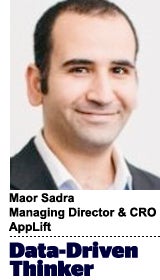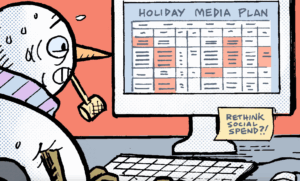 “Data-Driven Thinking” is written by members of the media community and contains fresh ideas on the digital revolution in media.
“Data-Driven Thinking” is written by members of the media community and contains fresh ideas on the digital revolution in media.
Today’s column is written by Maor Sadra, managing director and chief revenue officer at AppLift.
Within the next few years, the crowded LUMAscape will have 70% fewer logos on it, which is a good thing for advertisers.
Consolidation in the mobile ad tech space is inevitable because the current state of fragmentation breeds inefficiency and negatively affects campaign performance. Buying is too complicated. Advertisers’ use of multiple vendors benefits some providers but limits marketers’ ability to capitalize on mobile’s potential.
It is hard for advertisers to find ad tech partners that can meet all, or even most, of their needs, so they expand their marketing reach by stacking up resources. They work with specialized vendors and various tech solutions, resulting in a siloed approach, communication issues and inefficiencies.
You can’t blame brands for choosing so many partners. The industry celebrates specialization, and there is a sense that when something is new, you will get better results by working with a specialist. Plus, digital advertising is complicated. It is often easier to hire a new partner than to find or build the knowledge internally.
Advertisers that manage the bulk of their marketing in-house also feel the effects of fragmentation because they must hire so many different people with varied skill sets. It is not uncommon to need a team of 30 to run basic advertising campaigns. That gets expensive, and when their marketing needs inevitably change, it can also get thorny. For example, how do you staff when marketing a seasonal product and only advertising during the holidays?
Fragmentation Jeopardizes Campaign Results
Because mobile advertising is so disconnected, it is hard to get a holistic view of marketing spend and understand how efforts influence each other.
Let’s say an app marketing company works with a social media acquisition manager and video acquisition manager. The video manager launches a campaign that generates many clicks but few downloads. The social media manager launches a Facebook campaign that leads to many conversions. The managers don’t realize that many people downloaded the app on Facebook after watching the video. The marketers can’t see the big picture – until manager No. 1 cancels the video spend and manager No. 2 scratches his head as performance plummets.
Most marketers, especially performance-based ones, care more about results than the ad channel or format. Their job is to get the most from every dollar they spend. Since there is a lot of waste across today’s mobile advertising landscape wastes dollars, that alone is enough to guarantee that change is imminent.
What’s Shiny And New Will Become Standardized
Ad tech fragmentation is related to marketers’ reverence for the “shiny new thing.” Many brand marketers experiment to find tactics that deliver optimal marketing results and to show others that they keep up with the times. New platforms often require a unique strategy and sometimes a specialist. Brands enlist experts to help them with Snapchat’s nonstandardized ad format, for example.
Any platform with staying power will become standardized eventually. IAB’s dealing with native advertising took time, but now there are rules governing native advertising, making it easier for advertisers and ad tech companies to proceed without a native specialist.
It is in the best interest of new players to explore programmatic channels to improve monetization. Snapchat proved it meant business when it rolled out advertiser-friendly updates, including an API, so brands could use programmatic interfaces. This is likely one of many steps the network will take to become more accessible to advertisers.
Ad Tech Forgot Its Purpose
Some ad tech players benefit from fragmentation. Entire businesses are built on it. Many of today’s new mobile players tackle a niche problem or cater to an immediate need, whether it is ad blocking or mobile attribution. Meanwhile, some of today’s existing ad tech businesses stay too hyperfocused and shy away from addressing industry changes.
But consolidation is imminent. Within the next few years a limited number of winners will “take all” within each ad tech market and eliminate the need for ultra-niche solutions. For example, new attribution players sprouted after Apple rolled out Unique Device Identifiers but they eventually consolidated; multiple niche players didn’t make sense.
There will always be new technology, publishers and platforms. Ad tech needs to remember its function: to provide technology that facilitates the infrastructure needed to support ad trading. Ad tech can’t be afraid of new mediums. It needs to support them, provide integrations and find solutions so companies don’t have to stack up resources.
Follow AppLift (@AppLift) and AdExchanger (@adexchanger) on Twitter.













